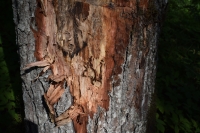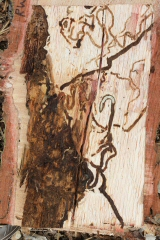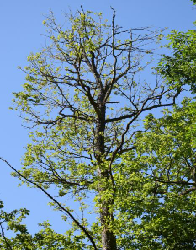In 2017, the bacterium that causes acute oak decline was first detected in Latvia
The State Plant Protection Service, after receiving information from the State Forest Service about declining oak trees in the territory of Talsu pauguraine Nature Park, took samples, in which a dangerous oak disease, Acute Oak Decline, was detected for the first time in Latvia.
Acute Oak decline is caused by bacteria that have only recently been discovered by scientists: Gibbsiella quercinecans and Brenneria goodwinii.
The presence of the disease has been confirmed by laboratory analysis in the UK and Switzerland, but symptoms have been observed in several European countries. The disease is widespread in the UK, where extensive research is being carried out.
On 14 December 2018, a multilateral cooperation agreement was signed for further work and scientific research on the disease over a three-year period - the scientific research project "Development of solutions for the control of acute oak decline in the Talsu pauguraine in the territory of the Forest Research Station, which can also be applied in the rest of Latvia, if necessary".







